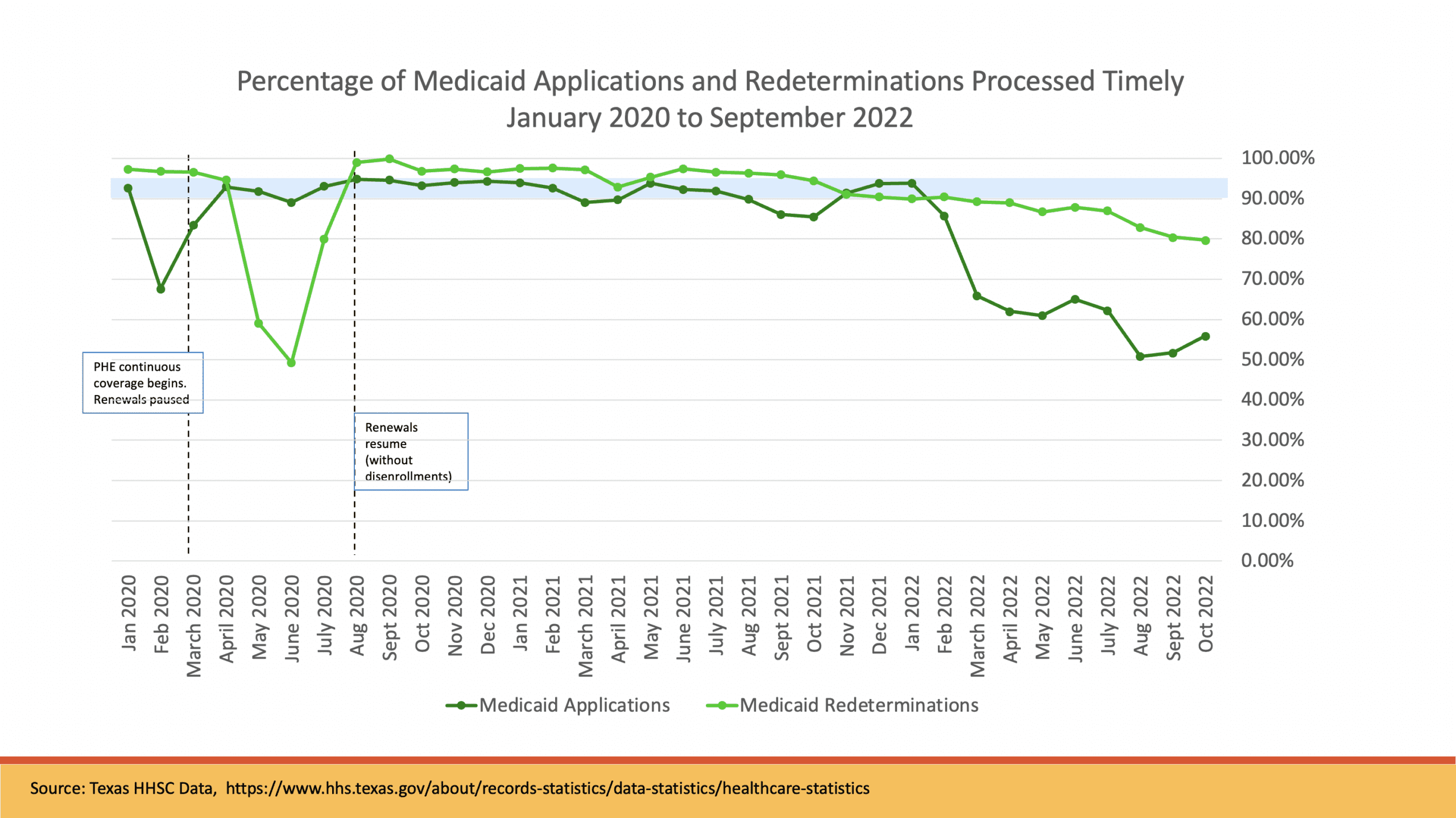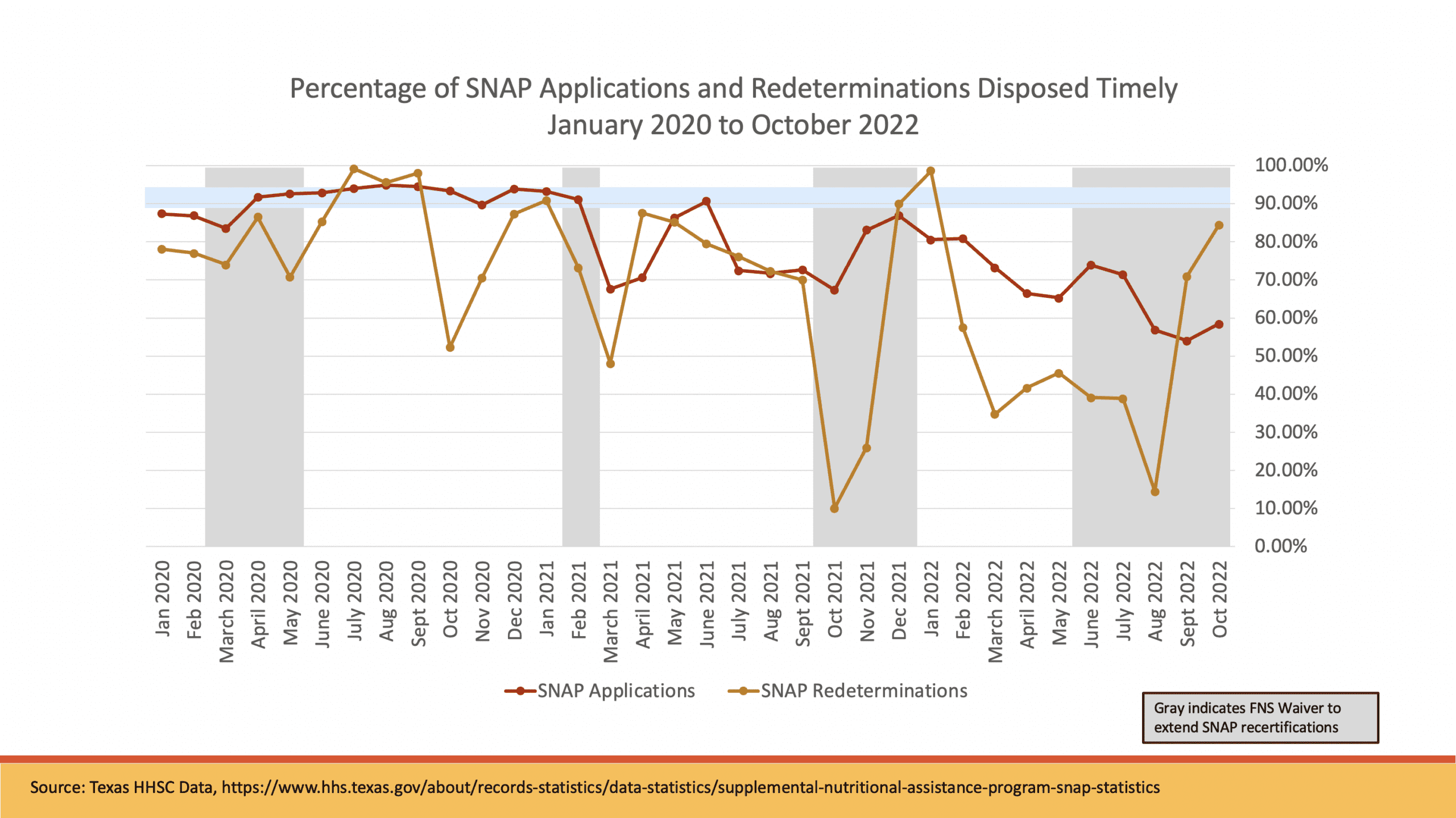View this testimony as a PDF here.
Every Texan (formerly CPPP) appreciates the opportunity to submit recommendations and comments on the Texas Health and Human Services Commission (HHSC) Legislative Appropriations Request dated September 9, 2022.
The Benedictine Sisters of Boerne, Texas, founded Every Texan (formerly CPPP) in 1985 to advance public policy solutions for expanding access to health care. We became an independent, tax-exempt organization in 1999. Today, we prioritize policies that will measurably improve equity in and access to health care, food security, education, and financial security. We are based in Austin, Texas, and work statewide.
As we draft these comments, we have not yet had the benefit of seeing an HHSC public summary presentation of the LAR. We understand that some questions we raise in this initial comment opportunity may be answered by such presentations. We identify Exceptional Items (EIs) of special interest below.
EI #1: Maintain Client Services Cost Growth
As always, Every Texan strongly supports the agency EI #1 request to fund cost growth in Medicaid. It is critical that budget writers understand the full impact of inflation and intensity-driven Medicaid cost increases, and either fund those costs in the initial General Appropriations Act, or be prepared to cover those costs in a subsequent supplemental appropriations.
EI #2 Address Critical Workforce Needs
Every Texan strongly supports equipping HHSC with adequate numbers of eligibility staff and contractor staff support, and with the authority to adopt the streamlining policy changes needed to achieve two urgent goals:
- Restore timely processing of current levels of Medicaid and SNAP applications and renewals to meet federal standards (30 days for SNAP, 45 days for Medicaid).
- Equip HHSC to process the increased volume of Medicaid re-certifications that will be required when federal government determines that the Medicaid continuation requirement under the 2020 FFCRA is discontinued. (Note: it is possible that current flexibility to postpone SNAP renewals during the PHE will also end. Preventing interruption of SNAP benefits during the current wave of high inflation must be a priority to protect Texas families and seniors.)


Every Texan appreciates HHSC’s strong messaging in the LAR communicating the critical importance of rectifying the agency’s severe person-power shortage. HHSC has not met Medicaid timeliness goals for most of 2022. HHSC reports that only 50% of Medicaid applications were processed timely (45 days) in August 2022, and only 57% of SNAP applications (30 days).
Questions about EI #2: Additional detail to describe how the EI #2 funds are expected to affect eligibility is needed. All of the $440.7 million (AF) in EI #2 is for salary/compensation. Does it fund any additional eligibility FTES, or are all funds dedicated to pay increases to allow HHSC to more easily fill existing positions? A review of the schedule 4B Strategy Allocation in the LAR finds at least $160 million is for staff with work that may touch the enrollment systems (incl. TIERS and central oversight); compared to about $170 million for SSLCs and mental hospitals.
Budget writers also need information on the degree to which the proposed funding (here or in another EI) is adequate to allow expanded capacity among Medicaid and SNAP contractors, e.g. Maximus’ 2-1-1 operations.
Recommendation
Every Texan urges HHSC and budget decision makers to provide for solutions to the current timeliness deficit and the upcoming PHE “Unwinding” challenge that will require not only filled state FTEs, but also additional staff capacity and improved performance from state contractors, as well as the authority to make key policy and process changes. Important examples include:
- Best practices to allow Medicaid enrollees to quickly and easily update their contact information;
- Updating outdated income documentation standards that give Texas Medicaid exceptionally low rates of administrative renewal; and
- Capacity to require contractors to promptly improve performance. For example, HHSC recently worked with state contractor Maximus to significantly speed up answer times in the “2-1-1” portion for HHSC benefits.
- To improve performance, Maximus may have had to increase staffing, which in turn may have called for a contract “change order” with a price tag for HHSC.
- In addition, for Maximus’ 2-1-1 workers to truly help with the current need for updated info and the large expected need when the PHE continuous coverage ends, policy/process must allow them to directly input the info, not just add that info to a still-backlogged queue of state eligibility workers.
To reverse the timeliness deficit and prep the eligibility system to avoid loss of food and medical benefits in the “PHE unwinding” may require not only EI #2, but also portions of other EIs (e.g., #16 Comply w/ State and Fed Regulations; #17 Support Regulatory Compliance; #18 Maintain Public Facing Offices; #19 Application Modernization; #21 Enhancing Medicaid Enrollment and Contract Management), as well as other funding that may not be reflected in the current EI list.
Support of Other EIs: Every Texan appreciates and supports these HHSC EIs, and looks forward to hearing greater detail on them from HHSC staff as legislative committees are briefed on the LAR.
- #3 Improve Mental Health Services for Adults
- #5 Better Birth Outcomes
- #11 Early Childhood Intervention caseload and Method of Finance
- #12 Consolidated rates, Medicaid and CHIP Contracts and Administration ($0 requested, TBD). Every Texan looks forward to the recommendation for this item in the Article II Consolidated 3 Budget. We commend HHSC for identifying as top priorities for reimbursement rates Community Attendant Services; Wellness Visits for Kids and Other Office Visits; and Birth-related and Women’s Health Surgeries.
- #18 Maintain public-facing offices (eligibility offices included). It is our understanding that a number of local HHSC eligibility offices have closed since 2020. We hope that HHSC will promptly assess the implications of this loss of capacity for the current timeliness deficit, as well as for the upcoming PHE Unwinding. We hope that this EI will support re-opening of local offices where needed.
- #19 Application Modernization (7-year cloud migration of TIERS eligibility system). With the information in hand, it is not clear whether this will enhance the client experience or help improve timeliness.
- #21 Enhancing Medicaid Enrollment and Contract Management
D.1.1. Family Planning Program (within the Women’s Health Programs). Every Texan echoes the recommendation from the Texas Women’s Healthcare Coalition that the Legislature appropriate no less than $153.6 million in All Funds for the Family Planning Program within the Women’s Health Programs D.1.1. budget strategy for the FY 24-25 budget. Current funding is insufficient to meet the demand for preventive services in the program.
